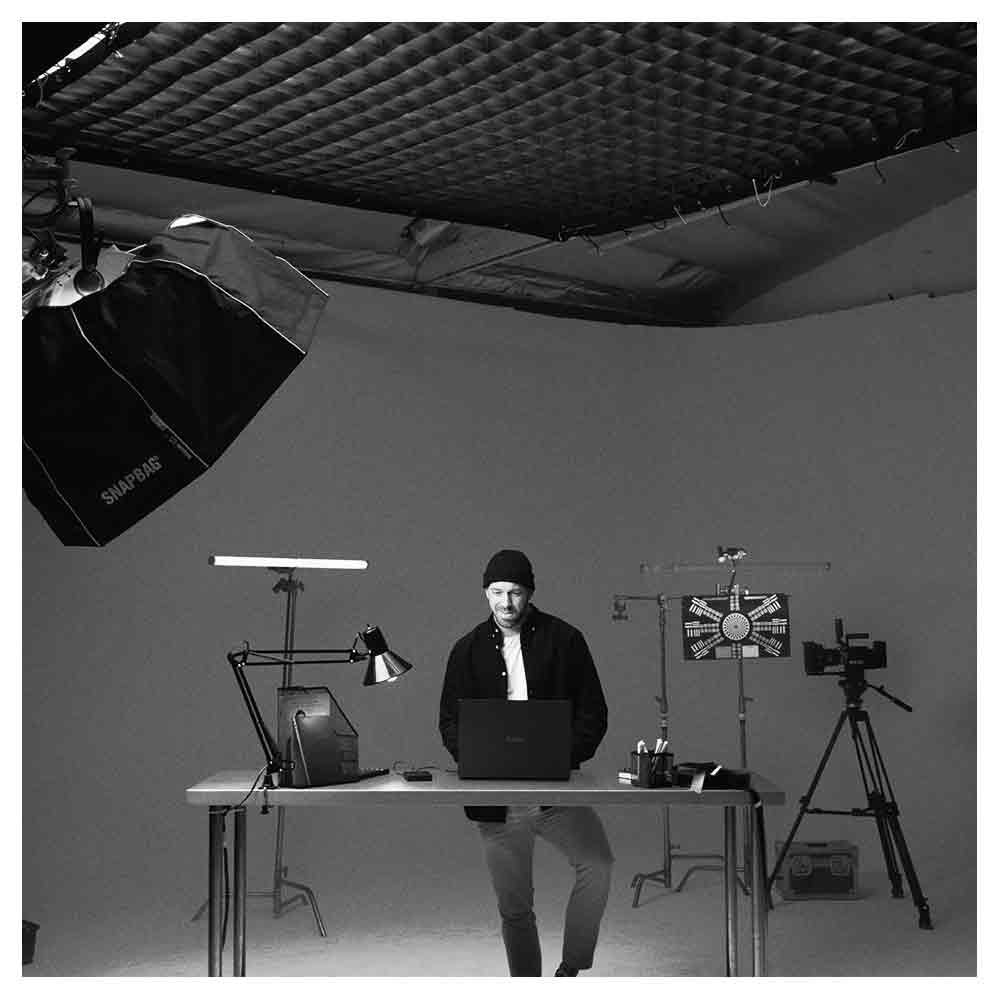A Step-By-Step Guide For How To Write A Film Treatment
Every great film starts with a spark of inspiration, a compelling idea that lures you in and refuses to let go.
But how do you transform that story idea into a captivating film treatment—a vital marketing tool used for pitching your story to potential investors and collaborators—that persuades industry professionals to invest in your project?
This guide will help you master the art of writing film treatments, turning your creative vision into a blueprint for success
What Is a Film Treatment?
A film treatment is a written document that outlines the film's story, characters, and structure. It usually ranges from 5 to 30 pages long and is presented in a narrative format.
Although there is no strict film treatment structure, it should include certain essential elements:
Title: The title should be clear and concise, giving the reader an idea of the film's theme.
Logline: A summary of one or two sentences that captures the reader's attention and provides an idea of the film's plot.
Synopsis: A story summary that includes the plot, setting, and characters. It should be between 1 to 2 pages long and convey the crucial plot points.
Character descriptions: Brief descriptions of each character that include their name, age, occupation, and personality traits.
Themes: The film's themes should be identified and discussed, helping the reader understand the film's message.
The Film Structure: The structure of the film should be outlined, including the inciting incident, rising action, climax, and resolution.
How to write a film treatment?
Step 1 — Research and Inspiration: Building Your Film's Foundation
Writing a film treatment requires more than just a great screenplay idea. You must conduct thorough research to flesh out your story's world, characters, and themes.
The more knowledge you have, the easier it will be to write a film or screenplay treatment, that feels authentic and captivating.
Explore similar films, read about the time and place your story is set in, and familiarize yourself with the genre's conventions.
Step 2 — Write a logline
A logline is a one-sentence summary of your story. It should be short and snappy and give the reader a clear idea of what your film is about. To write a good logline, use the following formula: "When [inciting incident] happens, a [character description] must [objective] before [stakes]."
Step 3 — Develop the characters
The characters are the heart and soul of your story. They should be well-rounded, relatable, and have clear motivations and goals.
Spend time developing your main characters and ensuring they have distinct personalities and traits.
When developing your characters, consider the following:
What are their backstories? What events in their past have shaped who they are?
What are their motivations and goals? What do they want, and why do they want it?
What are their flaws and weaknesses? How do these flaws impact their journey throughout the story?
How do the characters relate to each other? Do they have conflicts, alliances, or other relationships that drive the story forward?
Step 4 — Establish the setting
The setting is the world in which your story takes place. It can be a real or fictional place, but it should be an integral part of the story and contribute to the overall mood and tone.
When establishing your setting, consider the following:
What is the time period in which your story takes place?
What is the location of your story? Is it a specific city, country, or region?
What is the atmosphere and mood of the setting? Is it dark and foreboding or bright and cheerful?
How does the setting impact the characters and their goals?
Step 5 — Identify the themes
Themes are the underlying ideas or messages your story tries to convey. They give your story depth and meaning and help to connect with your intended audience on a deeper level.
When identifying your themes, consider the following:
What is the big idea that you want to explore in your story?
What messages do you want your audience to take away from your film?
How do the characters and plot contribute to the exploration of your themes?
Step 6 — Consider the tone
The tone is the mood or atmosphere of your story. It can be light-hearted, serious, suspenseful, or emotional.
The tone will help establish the overall feel of your film and influence how your audience experiences the story.
When considering the tone, think about the following:
What emotions do you want your audience to feel while watching your film?
How does the tone contribute to the overall message of your film?
Step 7 — Outline The plot
Now that you understand the key elements of your story, it's time to write the outline of your plot.
The plot is the sequence of events that make up the major moments in your story.
When outlining your own plot points, consider the following:
What is the inciting incident that sets the story in motion?
What obstacles must the main character overcome to achieve their goal?
How does the story build to the climax?
What is the resolution of the story?
Employing a three-act structure can help you lay out your story's progression and ensure it flows logically.
Act 1 - The Setup
Introduce your characters, their world, and the central conflict. This act should grab your audience's attention and make them care about your story. Establish your protagonist's goals and the stakes involved.
Act 2 - The Confrontation
As your characters struggle to achieve their goals, tension should build. Act 2 is where obstacles arise, alliances are formed, and relationships evolve. This is the longest part of your treatment, showcasing the heart of your story.
Act 3 - The Resolution
This is where the story climaxes, and the characters face their biggest challenges. The conflict should be resolved, and the characters should experience growth, learning valuable lessons from their journey.
Remember to keep your treatment focused on the essentials of your story. Avoid going into too much detail or including unnecessary information.
Conclusion
Writing a film treatment is an essential part of the filmmaking process. It's your first draft, a tool that will help you to clarify your ideas, provide a roadmap for the production process, and convince others of the potential of your project.
When you start writing your treatment, remember to focus on the key elements of your story, including the characters, plot, themes, setting, and tone.
With a well-crafted treatment, you'll be one step closer to bringing your vision to life on the big screen.
If you want to dive deeper into the art of film treatments that sell, I highly recommend reading the book "Writing Treatments That Sell: How to Create and Market Your Story Ideas to the Motion Picture and TV Industry."
Frequently Asked Questions About Film Treatments
How detailed should a film treatment be?
A film treatment should be detailed enough to convey the story, characters, and key plot points clearly and engagingly.
Typically, treatments are between 5 to 15 pages long, with one to three paragraphs for each scene or two to six paragraphs for each act, depending on the complexity of the story.
The goal is to provide a concise yet comprehensive overview of your story, including the beginning, middle, and end, following the three-act structure.
Remember that a treatment is meant to "sell" your idea, so make sure it's well-written, engaging, and easy to follow.
Include character development, character arcs, and important scenes to create an effective treatment.
What is the difference between a film treatment and an outline?
A film treatment is a narrative document that provides a detailed overview of the story, characters, and plot points.
It's written in prose, using complete sentences and paragraphs, often in present tense, and may include snippets of dialogue. Examples of film treatment might include character names, story beats, and specific audience appeal.
On the other hand, an outline is a more structured and concise document that breaks down the story into its major components, such as acts or scenes.
Outlines are usually organized using headings, bullet points, or numbers, and they focus on the structure and order of events rather than storytelling.
Should I copyright my film treatment?
Copyrighting your film treatment can provide legal protection for your intellectual property.
While your work is technically copyrighted as soon as it's created, registering it with the U.S. Copyright Office or a similar organization in your country can provide additional legal protection in case of disputes or infringement.
Remember that copyright only protects the specific expression of your idea, not the idea itself. It's always a good practice to keep records of your work, including drafts and submission dates, to provide evidence of your original authorship.
This includes materials related to your screenplay format, screenwriting software, and development process.
What is the difference between a film proposal and a film treatment?
A film proposal is a business plan for pitching your film project to potential investors, producers, or other industry professionals, such as production companies or studio executives.
Compared to a film treatment, it typically includes additional information, such as a target audience, estimated budget, marketing strategy, working title, logline, and details about the creative team involved, like the director or screenplay writer.
In contrast, a film treatment focuses solely on the narrative aspect of the film, providing an overview of the story, characters, and plot points. It may also include a script treatment, which outlines the general direction of the screenplay.
As a budding screenwriter, it's essential to invest time in both the writing process and understanding the film industry, including film school, script writing, character development, and the many uses of screenwriting software.
Keep refining your craft, and remember that hard work and real-life experiences can greatly influence your creative process.
What are some key elements to include in a screenplay treatment?
A great screenplay treatment should include a log line, a detailed summary of the plot, character arcs for the main characters, and a clear exposition of the script’s structure.
It's essential to write in prose style, keeping the treatment engaging by using present tense. Treatments can vary in length, but aiming for concise clarity that captures the whole story is crucial.
How can a film script treatment differ from a screenplay treatment?
While both treatments serve to outline the story, a film script treatment is typically more detailed and closely aligned with the full script.
It includes scene-by-scene breakdowns and comprehensive details about key characters and plot points.
Conversely, a screenplay treatment might focus more broadly on the story arc and key events, serving as a more general roadmap.
Can you provide an example of an effective log line in a film treatment?
An effective log line succinctly summarizes the main plot and the protagonist's journey, capturing the essence and stakes of the story.
For instance, for James Cameron's "Terminator": "A cyborg assassin from a post-apocalyptic future travels back in time to kill a waitress, whose unborn son is destined to save humanity from the robotic apocalypse."
What should the treatment’s length be for a TV show versus a feature film?
Generally, TV show treatments should be shorter, around 5-10 pages, focusing on the pilot and the overarching series arc.
Feature film treatments can be more detailed, typically ranging from 10-20 pages, depending on the complexity of the plot and the number of key characters involved.
How can production software streamline the writing of a film treatment?
Production software can assist screenwriters by organizing thoughts, structuring the treatment with headings and subheadings, and offering templates that follow industry guidelines.
This can make the process more efficient and ensure that all crucial elements, such as character descriptions and plot development stages, are covered.
What is the best approach to writing a screenplay treatment that keeps a reader engaged?
To keep the reader engaged, write in a vivid prose style, include snippets of dialogue to give a flavor of the characters, and ensure the narrative has a strong voice and clear vision.
Starting with a compelling log line, outline the plot in present tense and highlight key scenes that showcase character development and major plot turns.
How important is feedback in refining a film treatment?
Feedback is crucial as it helps identify plot holes, underdeveloped character arcs, and pacing issues.
Engaging with a trusted group of readers—be it from peers, a writing group, or industry professionals like agents or producers—can provide different perspectives that enhance the screenplay’s depth and appeal.
When pitching a screenplay treatment to producers, what are some essential tips to keep in mind?
When pitching, being concise, articulate, and passionate is essential. Ensure your treatment includes a strong opening (logline), a compelling and succinct synopsis, and a clear indication of the film's target audience and market potential.
Be prepared to expand on any aspect verbally and show how your story stands out in the market.
How does one transition from writing a film treatment to drafting the full screenplay?
Begin by using the treatment as a foundation, then expand each section into a full scene, developing dialogue, scene descriptions, and character interactions as you go.
The treatment's structure should guide the screenplay’s first draft, ensuring the story flows logically and maintains the reader's interest throughout.
What strategies can help a screenwriter maintain creative energy while crafting lengthy film treatments and screenplays?
Setting regular writing goals, taking breaks to find inspiration, and varying the writing process (such as switching between detailed scripting and broader story outlining) can maintain momentum.
Additionally, discussing the project with peers or mentors can rejuvenate interest and inspire new ideas.

































